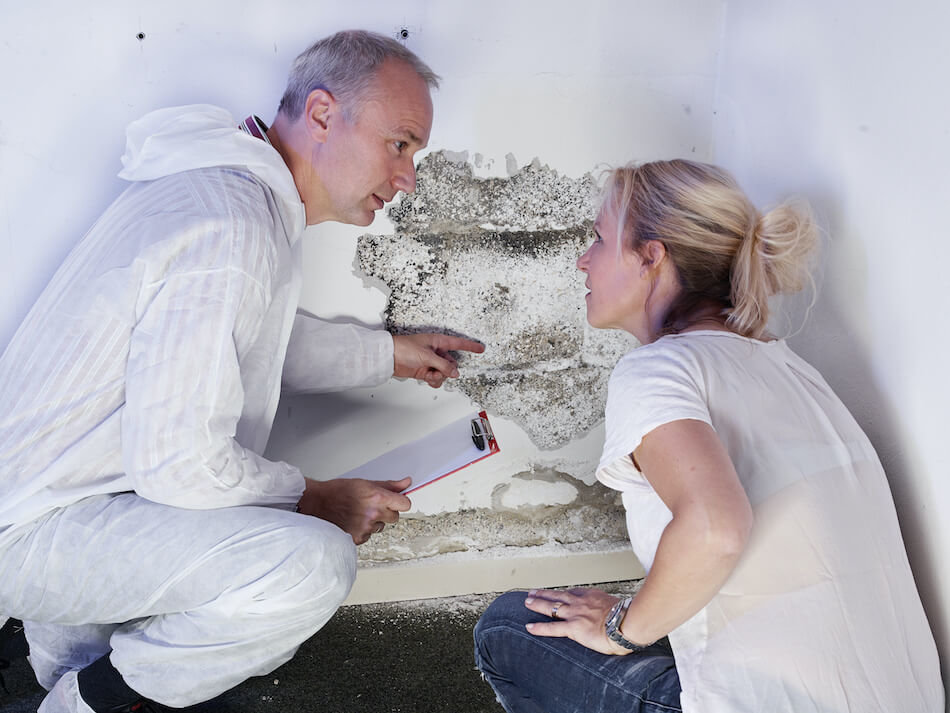Found Mold? How to Start the Mold Remediation Process
Posted by Lauren Schneider on Thursday, August 19th, 2021 at 8:43am.
 Maybe you know someone who's had mold in their home. Maybe it's happened to you. Mold occurs naturally, and while most homes are well-equipped to prevent its growth, it could appear when you least expect it. Unfortunately, mold is not a problem that will disappear on its own. It has to be removed or remediated as soon as possible after its discovery. Read on to learn about the best ways to remove or remediate mold growth in a home.
Maybe you know someone who's had mold in their home. Maybe it's happened to you. Mold occurs naturally, and while most homes are well-equipped to prevent its growth, it could appear when you least expect it. Unfortunately, mold is not a problem that will disappear on its own. It has to be removed or remediated as soon as possible after its discovery. Read on to learn about the best ways to remove or remediate mold growth in a home.
What Is Mold?
Mold is a type of fungi that proliferates in dark places. Mold spreads by releasing spores that turn into a fuzzy growth that most people have probably seen on old food. Mold damages whatever it's growing on and releases irritants into the air.
There are thousands of species of mold, and only some are toxic. While some are worse than others, none are desirable. There will always be some mold in your house, but you can establish a normal ecology where it's under control and undetectable. If you start to see or sense mold, though, you need mold treatment immediately.
The Difference Between Mold Removal and Mold Remediation
Mold removal is simply the act of removing mold. If there's not much and it's only on non-porous surfaces, you can remove it with traditional home cleaning techniques. Be aware, however, that it will release spores when it's disturbed. A face mask and gloves should be worn when cleaning the mold.
Mold remediation goes a step further. It includes the removal and replacement of damaged material that can't be salvaged. It incorporates cleaning and disinfecting of areas that can be saved. It eradicates mold and sometimes encapsulates it to prevent additional growth.
Mold Remediation: When to DIY and When to Call an Expert
During mold remediation, it's important to protect the health of the workers. Toxins may be released when mold is disturbed. The EPA advises that homeowners don't remove large mold areas alone. Major mold remediation is one of the home improvements handled by professionals, not DIYers.
For larger mold invasions, you need to hire a contractor who specialized in mold remediation. They'll come in with all the equipment and protective gear they need, including suits, gloves, goggles, and masks. Depending on the size of the problem, it may take several days to complete remediation. There are several steps in the process.
Fix the Problem That Caused the Mold
It may be up to you to identify the mold's cause before the remediation crew comes in. In some cases, the remediator may subcontract the work or recommend a contractor. Often this is a plumbing problem such as a leak. Additionally, a flaw in the roof could allow damp air to infiltrate a dark space. Identifying high-risk mold areas should occur in your final home inspection.
Isolate the Area & Clean the Air
Again, mold can be dangerous when disturbed. You don't want disturbed mold moving throughout the home. The workers will shut the doors and windows and seal other openings with protection such as polyethylene sheeting. The air is cleansed with an air scrubber or air exchanger that replaces the moldy atmosphere with clean, fresh air.
Remove Porous Materials
When mold gets into porous materials such as carpets and gypsum, there's little chance of saving it. Furniture and carpeting have fibers that can retain spores no matter how thoroughly you clean them. The crew will bag up all such materials and dispose of them safely.
Clean Non-Porous Materials
These are usually unmovable structures such as hard flooring and woodwork. First, all visible traces of mold are removed. Then the contractor will spray with an EPA-approved biocide. Depending on the cleanser and the severity of the problem, the biocide might be allowed to sit overnight. Next, they'll scrub the surface free of mold. They may encapsulate any mold that still hasn't been removed.
Drying & Encapsulation
All materials that have been cleansed must be thoroughly dried. You don't want leftover moisture to enable mold to get a new foothold. Rooms are dried with air movers and dehumidifiers, while moisture meters ensure that dryness is adequate.
Surfaces may be sprayed with special encapsulating paint that will keep any unremoved mold from causing a problem. Encapsulation is a recognized, approved type of remediation.
Replacement & Rebuilding
Any drywall, carpet, and similar material that was removed must be replaced. The remediator will most likely subcontract this or leave it up to the homeowner.
Ensuring the Remediation is Successful
When everything is done, the home should be inspected to ensure remediation is complete. Often the remediation contractor will do this. Mold remediation is an unpleasant process usually involving dealing with insurance companies, leaving home, and people in white suits using strong disinfectants. You want to make sure it's done right so the process won't have to be repeated.
